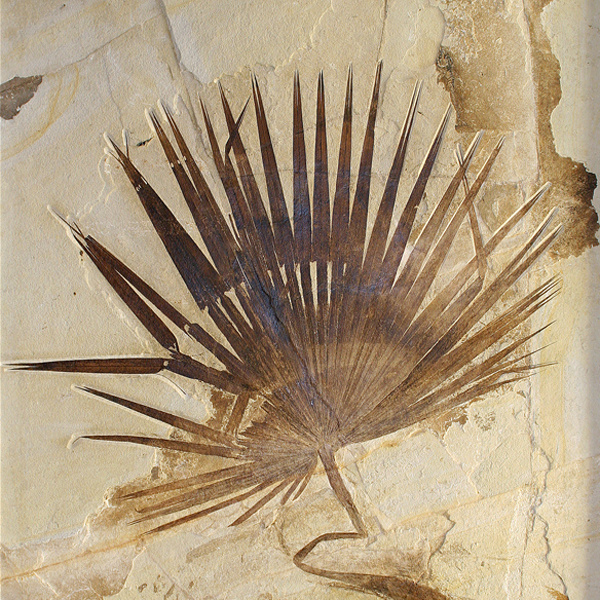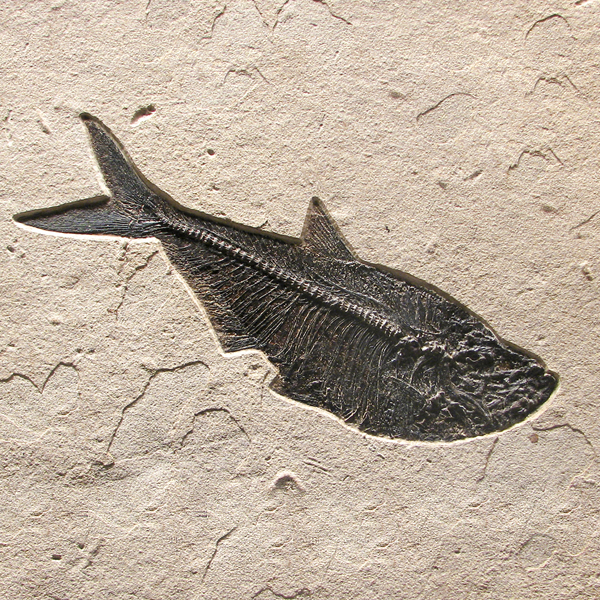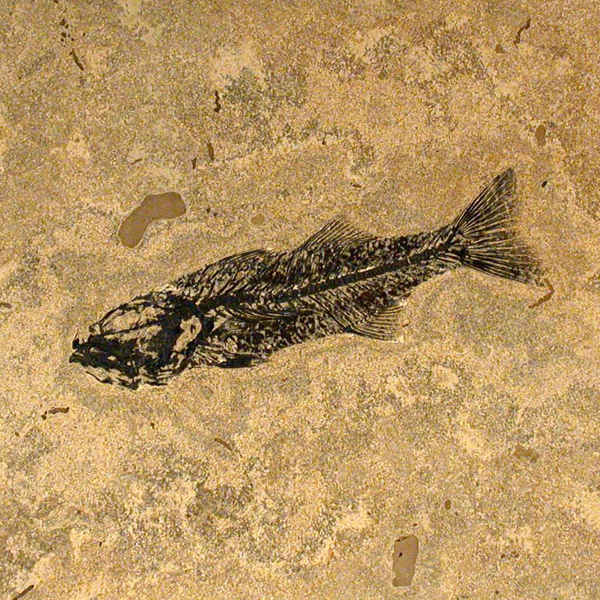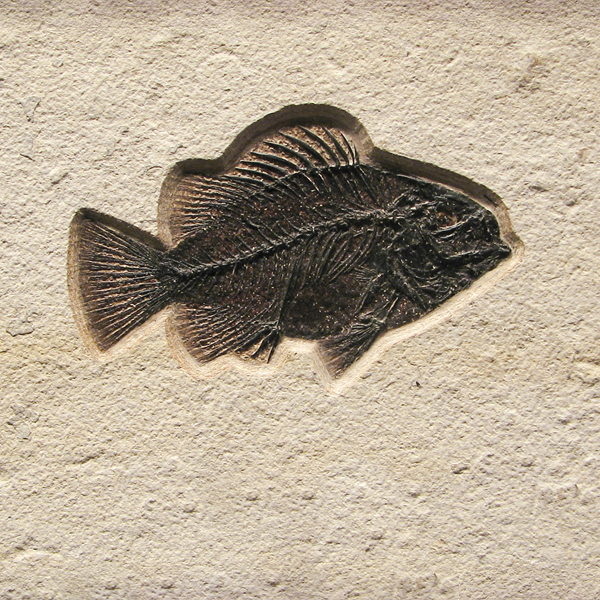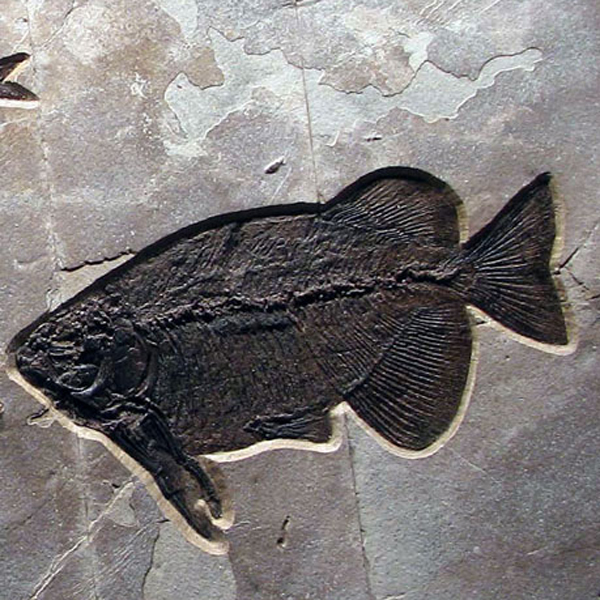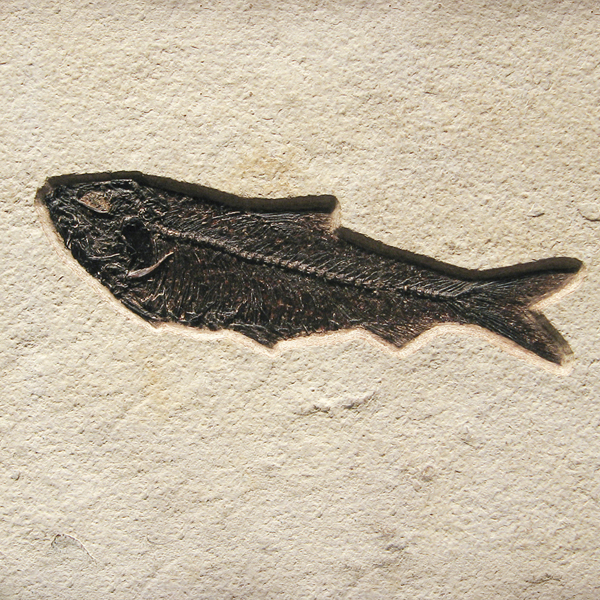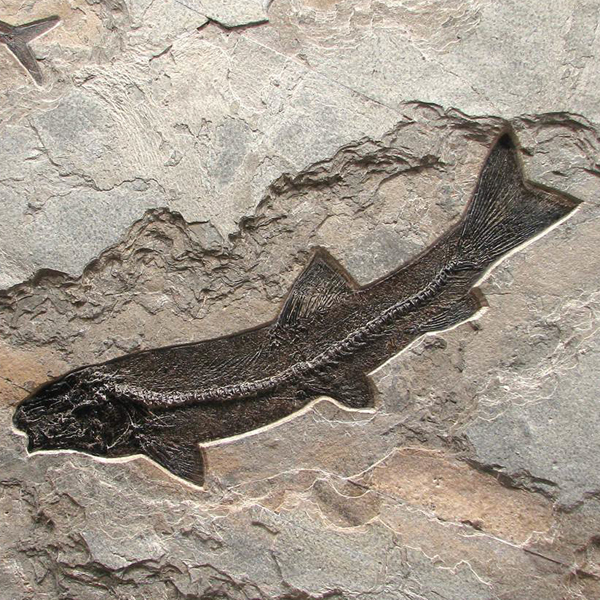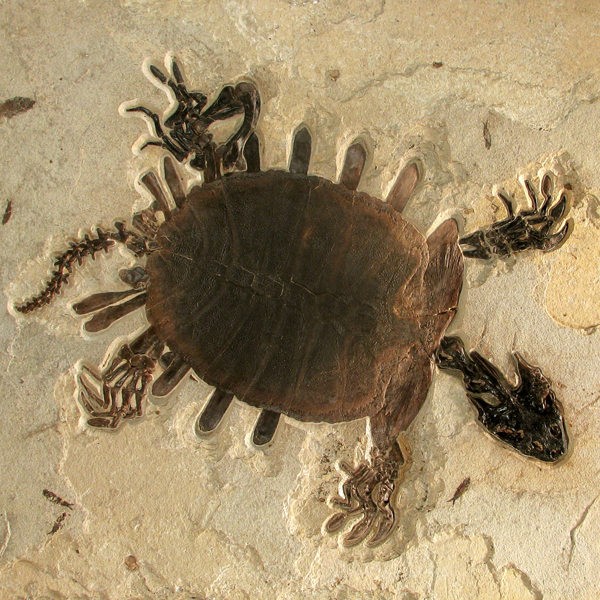Flora & Fauna Fossils
Priscacara
There are two species of “Prisky”, Priscacara liops and Priscacara serrata. The Priscacara has an oval, sunfish-like body with stout dorsal and anal spines which may have prevented it from being swallowed by other fish. P. serrata is larger on average (6 to 7”) than P. liops (4.5”). The Priscacara is the favorite of many collectors, most likely due to the excellent preservation of the spiny dorsal fin.
Phareodus
The etymology of the name Phareodus is phare (to have), odus (tooth). This is a good name, because this extinct relative of the Piranha had teeth in abundance. There are two species, Phareodus encaustus and Phareodus testis. P. encaustus was the larger of the two, averaging about 15”, while P. testis averaged between 6” and 8”. Spines of Mioplosus and Priscacara are often found in the stomachs of Phareodus, illustrating that the teeth were put to good use.
Knightia
Knightia eocaena was the first fossil fish to be scientifically described. It was collected in 1856 by geologist Dr. John Evans, identified as a herring and named Clupea humilis. It was later changed to the current name, in honor of paleontologist Wilbur Clinton Knight. Knightia (average length: 3.5”) occur frequently in the deposits of the quarry, most prominently in the layer named “Fossil Storm”. This is a “mass mortality” layer featuring relatively dense concentrations of fossilized Knightia. Theories on cause range from stratified water turnover to toxins in the water produced by blue-green algae
Turtle (Trionyx sp.)
Turtle fossils are the rarest animal finds in the quarry. Several skull and shell fragments have been unearthed while only a handful of complete specimens have surfaced. A Trionyx is a soft-shelled aquatic turtle which still exists today, usually in shallow water near shore in lakes and rivers. Trionychid turtles date as far back as the Jurassic period. Modern trionychid turtles are found today in Africa, Asia, Malaysia and North America.

